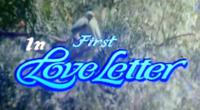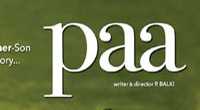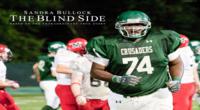
Fear is a feeling induced by perceived danger or threat that occurs in certain types of organisms, which causes a change in metabolic and organ functions and ultimately a change in behavior, such as fleeing, hiding, or freezing from perceived traumatic events. Fear in human beings may occur in response to a specific stimulus occurring in the present, or in anticipation or expectation of a future threat perceived as a risk to body or life. The fear response arises from the perception of danger leading to confrontation with or escape from/avoiding the threat (also known as the fight-or-flight response), which in extreme cases of fear (horror and terror) can be a freeze response or paralysis.
In humans and animals, fear is modulated by the process of cognition and learning. Thus fear is judged as rational or appropriate and irrational or inappropriate. An irrational fear is called a phobia.
Psychologists such as John B. Watson, Robert Plutchik, and Paul Ekman have suggested that there is only a small set of basic or innate emotions and that fear is one of them. This hypothesized set includes such emotions as acute stress reaction, anger, angst, anxiety, fright, horror, joy, panic, and sadness. Fear is closely related to, but should be distinguished from, the emotion anxiety, which occurs as the result of threats that are perceived to be uncontrollable or unavoidable. The fear response serves survival by generating appropriate behavioral responses, so it has been preserved throughout evolution. Sociological and organizational research also suggests that individuals’ fears are not solely dependent on their nature but are also shaped by their social relations and culture, which guide their understanding of when and how much fear to feel.
Contents
Signs and symptoms
Many physiological changes in the body are associated with fear, summarized as the fight-or-flight response. An inborn response for coping with danger, it works by accelerating the breathing rate (hyperventilation), heart rate, constriction of the peripheral blood vessels leading to blushing and vasodilation of the central vessels (pooling), increasing muscle tension including the muscles attached to each hair follicle to contract and causing "goose bumps", or more clinically, piloerection (making a cold person warmer or a frightened animal look more impressive), sweating, increased blood glucose (hyperglycemia), increased serum calcium, increase in white blood cells called neutrophilic leukocytes, alertness leading to sleep disturbance and "butterflies in the stomach" (dyspepsia). This primitive mechanism may help an organism survive by either running away or fighting the danger. With the series of physiological changes, the consciousness realizes an emotion of fear.
Causes
People develop specific fears as a result of learning. This has been studied in psychology as fear conditioning, beginning with John B. Watson's Little Albert experiment in 1920, which was inspired after observing a child with an irrational fear of dogs. In this study, an 11-month-old boy was conditioned to fear a white rat in the laboratory. The fear became generalized to include other white, furry objects, such as a rabbit, dog, and even a ball of cotton.
Fear can be learned by experiencing or watching a frightening traumatic accident. For example, if a child falls into a well and struggles to get out, he or she may develop a fear of wells, heights (acrophobia), enclosed spaces (claustrophobia), or water (aquaphobia). There are studies looking at areas of the brain that are affected in relation to fear. When looking at these areas (such as the amygdala), it was proposed that a person learns to fear regardless of whether they themselves have experienced trauma, or if they have observed the fear in others. In a study completed by Andreas Olsson, Katherine I. Nearing and Elizabeth A. Phelps, the amygdala were affected both when subjects observed someone else being submitted to an aversive event, knowing that the same treatment awaited themselves, and when subjects were subsequently placed in a fear-provoking situation. This suggests that fear can develop in both conditions, not just simply from personal history.
Fear is affected by cultural and historical context. For example, in the early 20th century, many Americans feared polio, a disease that can lead to paralysis. There are consistent cross-cultural differences in how people respond to fear. Display rules affect how likely people are to show the facial expression of fear and other emotions.
Although many fears are learned, the capacity to fear is part of human nature. Many studies have found that certain fears (e.g. animals, heights) are much more common than others (e.g. flowers, clouds). These fears are also easier to induce in the laboratory. This phenomenon is known as preparedness. Because early humans that were quick to fear dangerous situations were more likely to survive and reproduce, preparedness is theorized to be a genetic effect that is the result of natural selection.
From an evolutionary psychology perspective, different fears may be different adaptations that have been useful in our evolutionary past. They may have developed during different time periods. Some fears, such as fear of heights, may be common to all mammals and developed during the mesozoic period. Other fears, such as fear of snakes, may be common to all simians and developed during the cenozoic time period. Still others, such as fear of mice and insects, may be unique to humans and developed during the paleolithic and neolithic time periods (when mice and insects become important carriers of infectious diseases and harmful for crops and stored foods).
Fear is high only if the observed risk and seriousness both are high, and it is low if risk or seriousness is low.
Top 10 types in the U.S.
In a 2005 Gallup Poll (U.S.), a national sample of adolescents between the ages of 13 and 17 were asked what they feared the most. The question was open-ended and participants were able to say whatever they wanted. The top ten fears were, in order: terrorist attacks, spiders, death, failure, war, criminal or gang violence, being alone, the future, and nuclear war.
In an estimate of what people fear the most, book author Bill Tancer analyzed the most frequent online queries that involved the phrase, "fear of..." following the assumption that people tend to seek information on the issues that concern them the most. His top ten list of fears published 2008 consisted of flying, heights, clowns, intimacy, death, rejection, people, snakes, failure, and driving.
Common phobias
According to surveys, some of the most common fears are of demons and ghosts, the existence of evil powers, cockroaches, spiders, snakes, heights, water, enclosed spaces, tunnels, bridges, needles, social rejection, failure, examinations, and public speaking.
Fear of death
Death anxiety is multidimensional; it covers "fears related to one's own death, the death of others, fear of the unknown after death, fear of obliteration, and fear of the dying process, which includes fear of a slow death and a painful death".
The Yale philosopher Shelly Kagan examined fear of death in a 2007 Yale open course by examining the following questions: Is fear of death a reasonable appropriate response? What conditions are required and what are appropriate conditions for feeling fear of death? What is meant by fear, and how much fear is appropriate? According to Kagan for fear in general to make sense, three conditions should be met:
The amount of fear should be appropriate to the size of "the bad". If the three conditions are not met, fear is an inappropriate emotion. He argues, that death does not meet the first two criteria, even if death is a "deprivation of good things" and even if one believes in a painful afterlife. Because death is certain, it also does not meet the third criterion, but he grants that the unpredictability of when one dies may be cause to a sense of fear.
In a 2003 study of 167 women and 121 men, aged 65–87, low self-efficacy predicted fear of the unknown after death and fear of dying for women and men better than demographics, social support, and physical health. Fear of death was measured by a "Multidimensional Fear of Death Scale" which included the 8 subscales Fear of Dying, Fear of the Dead, Fear of Being Destroyed, Fear for Significant Others, Fear of the Unknown, Fear of Conscious Death, Fear for the Body After Death, and Fear of Premature Death. In hierarchical multiple regression analysis the most potent predictors of death fears were low "spiritual health efficacy", defined as beliefs relating to one's perceived ability to generate spiritually based faith and inner strength, and low "instrumental efficacy", defined as beliefs relating to one's perceived ability to manage activities of daily living.
Psychologists have tested the hypotheses that fear of death motivates religious commitment, and that assurances about an afterlife alleviate the fear; however, empirical research on this topic has been equivocal. Religiosity can be related to fear of death when the afterlife is portrayed as time of punishment. "Intrinsic religiosity", as opposed to mere "formal religious involvement", has been found to be negatively correlated with death anxiety. In a 1976 study of people of various Christian denominations, those who were most firm in their faith, who attended religious services weekly, were the least afraid of dying. The survey found a negative correlation between fear of death and "religious concern".
In a 2006 study of white, Christian men and women the hypothesis was tested that traditional, church-centered religiousness and de-institutionalized spiritual seeking are ways of approaching fear of death in old age. Both religiousness and spirituality were related to positive psychosocial functioning, but only church-centered religiousness protected subjects against the fear of death.
Fear of the unknown
Fear of the unknown or irrational fear is caused by negative thinking (worry) which arises from anxiety accompanied with a subjective sense of apprehension or dread. Irrational fear shares a common neural pathway with other fears, a pathway that engages the nervous system to mobilize bodily resources in the face of danger or threat. Many people are scared of the "unknown". The irrational fear can branch out to many areas such as the hereafter, the next ten years or even tomorrow. Chronic irrational fear has deleterious effects since the elicitor stimulus is commonly absent or perceived from delusions. In these cases specialists use False Evidence Appearing Real as a definition, alternatively therapists use it as acronym for Feeling frightened, Expecting bad things to happen, Actions and attitudes that can help, and Rewards and results in Rx programs like Coping Cat. Such fear can create comorbidity with the anxiety disorder umbrella. Being scared may cause people to experience anticipatory fear of what may lie ahead rather than planning and evaluating for the same. For example, "continuation of scholarly education" is perceived by many educators as a risk that may cause them fear and stress, and they would rather teach things they've been taught than go and do research. That can lead to habits such as laziness and procrastination. The ambiguity of situations that tend to be uncertain and unpredictable can cause anxiety in addition to other psychological and physical problems in some populations; especially those who engage it constantly, for example, in war-ridden places or in places of conflict, terrorism, abuse, etc. Poor parenting that instills fear can also debilitate a child's psyche development or personality. For example, parents tell their children not to talk to strangers in order to protect them. In school they would be motivated to not show fear in talking with strangers, but to be assertive and also aware of the risks and the environment in which it takes place. Ambiguous and mixed messages like this can affect their self-esteem and self-confidence. Researchers say talking to strangers isn't something to be thwarted but allowed in a parent's presence if required. Developing a sense of equanimity to handle various situations is often advocated as an antidote to irrational fear and as an essential skill by a number of ancient philosophies.
Mechanism
Often laboratory studies with rats are conducted to examine the acquisition and extinction of conditioned fear responses. In 2004, researchers conditioned rats (Rattus norvegicus) to fear a certain stimulus, through electric shock. The researchers were able to then cause an extinction of this conditioned fear, to a point that no medications or drugs were able to further aid in the extinction process. However the rats did show signs of avoidance learning, not fear, but simply avoiding the area that brought pain to the test rats. The avoidance learning of rats is seen as a conditioned response, and therefore the behavior can be unconditioned, as supported by the earlier research.
Species-specific defense reactions (SSDRs) or avoidance learning in nature is the specific tendency to avoid certain threats or stimuli, it is how animals survive in the wild. Humans and animals both share these species-specific defense reactions, such as the flight-or-fight, which also include pseudo-aggression, fake or intimidating aggression and freeze response to threats, which is controlled by the sympathetic nervous system. These SSDRs are learned very quickly through social interactions between others of the same species, other species, and interaction with the environment. These acquired sets of reactions or responses are not easily forgotten. The animal that survives is the animal that already knows what to fear and how to avoid this threat. An example in humans is the reaction to the sight of a snake, many jump backwards before cognitively realizing what they are jumping away from, and in some cases it is a stick rather than a snake.
As with many functions of the brain, there are various regions of the brain involved in deciphering fear in humans and other nonhuman species. The amygdala communicates both directions between the prefrontal cortex, hypothalamus, the sensory cortex, the hippocampus, thalamus, septum, and the brainstem. The amygdala plays an important role in SSDR, such as the ventral amygdalofugal, which is essential for associative learning, and SS
Watch movie Fear online on Amazon
Watch movie Fear online
Watch The Movie On PrimeKisaan (2009) Full HD Movie Download
.jpg)
Nuvvu Vasthavani Full HD Movie Download

Singapore Full HD Movie Download

Vikram Vetal Ki Kahani Full HD Movie Download

Mawaali Full HD Movie Download

Mumbai Meri Jaan Full HD Movie Download

First Love Letter Full HD Movie Download

Paisa Ya Pyar Full HD Movie Download

Meri Pyaari Bahania Banegi Dulhania Full HD Movie Download

Paa Full HD Movie Download

Gunahon Ka Faisla Full HD Movie Download

Annabond Full HD Movie Download

The Blind Side Full HD Movie Download

The Gold Rush Full HD Movie Download

December Pookal Full HD Movie Download

Evarunenu Full HD Movie Download

Aata Modalaindi Full HD Movie Download

No Full HD Movie Download

Ninaivellam Nithya Full HD Movie Download

Ta Ra Rum Pum Full HD Movie Download

Luv Ka The End Full HD Movie Download

Download latest Movie from bollywood
- 1> baaghi 3
- 2> THE SKY IS PINK MOVIE FULL STORY AND REVIEW
- 3> Luka Chuppi
- 4> TO ALL THE BOYS I’VE LOVED BEFORE
- 5> Kabir Singh
- 6> Street Dancer 3D
- 7> Simmba
- 8> Gone Girl
- 9> The Girl Who Lived
- 10> Ludo
- 11> DILWALE DULHANIA LE JAYENGE
- 12> GUILTY
- 13> The Godfather
- 14> Adventures of Rusty
- 15> Sooryavanshi
- 16> Satyameva Jayate 2
- 17> Thappad
- 18> Bhool Bhulaiyaa 2
- 19> KGFChapter 2
- 20> Mardaani 2
- 21> Pinjar
- 22> Shivaji maharaj
- 23> Ek Villian 2
- 24> Hungama 2
- 25> Divergent
- 26> Mumbai Saga
- 27> The Internship
- 28> HIT (telugu)
- 29> Panga
- 30> The perfect date
- 31> 16 December
- 32> Gopala Gopala (Telugu)
- 33> Brahmastra
- 34> Gangubai Kathiawadi
- 35> Manmadhudu
- 36> Nenu local
- 37> Mahanati
- 38> Shatamanam bavathi
- 39> Lagaan
- 40> After
- 41> MOM
- 42> Shamshera
- 43> Raguvaran BTech
- 44> Khakee
- 45> The villain
- 46> OM
- 47> Mr. perfect
- 48> Bueatifull mind
- 49> Hichki
- 50> Gabbar Singh
- 51> Jogi
- 52> Before Sunrise
- 53> Before Sunset
- 54> Before Midnight
- 55> The Big Bull
- 56> Top Gun: Maverick
- 57> The Purge
- 58> The Sky is Pink
- 59> Laxmmi Bomb
- 60> Sadak 2
- 61> Sufna
- 62> Prithviraj
- 63> PK
- 64> Coolie No 1(2020)
- 65> Black Widow
- 66> Dear Zindagi
- 67> Dil Bechara
- 68> PHIR HERA PHERI
- 69> WAR
- 70> Dostana
- 71> RRR: Roudram Ranam Rudhiram
- 72> Maidan
- 73> Dabbang 3
- 74> Chhalaang
- 75> life as we know it
- 76> SherShaah
- 77> Sandeep Aur Pinky Faraar
- 78> Event Horizon
- 79> 83
- 80> Radhe: Your Most Wanted Bhai
- 81> Gunjan Saxena: The Kargil Girl
- 82> Mr India
- 83> Vivah
- 84> Anokha Bandhan
- 85> Ghost
- 86> Bhoot: Part One - The Haunted Ship
- 87> Haseen Dilruba
- 88> Laal Singh Chaddha
- 89> Qismat
- 90> Rajput
- 91> Drive
- 92> Dil Chahta Hai
- 93> Dil Ki Baazi
- 94> Dil Ka Rishta
- 95> Teesri Manzil
- 96> Dil
- 97> Love Aaj Kal
- 98> Khaali Peeli
- 99> Bunty Aur Babli 2
- 100> Atrangi Re
- 101> Gulabo Sitabo
- 102> Jodi
- 103> Suraj Pe Mangal Bhari
- 104> Deewana
- 105> Attack
- 106> Sardar Udham Singh
- 107> Toofan
- 108> THE LOVEBIRDS
- 109> Jersey
- 110> Ginny Weds Sunny
- 111> Thalaivi
- 112> Shiddat
- 113> Angels vs Zombies
- 114> Koi Mil Gya
- 115> Thank God
- 116> Bhuj: The Pride of India
- 117> Hum Aapke Hain Kaun
- 118> The Platform
- 119> Bird Box
- 120> Roohi Afzana
- 121> Torbaaz
- 122> Nikamma
- 123> World War Z
- 124> Extraction
- 125> Train to Busan
- 126> Life of Pi
- 127> SHAADI MEIN JROOR AANA
- 128> Himmat Aur Mehnat
- 129> To All The Boys: P.S. I Still Love You
- 130> Mimi
- 131> Good Newwz
- 132> Shubh Mangal Zyada Saavdhan
- 133> Raabta
- 134> Harry Potter and the Philosopher's Stone
- 135> Harry Potter and the Chamber of Secrets
- 136> Chhapaak
- 137> War of the Worlds
- 138> Harry Potter and the Prisoner of Azkaban
- 139> Harry Potter and the Goblet of Fire
- 140> MURDER MYSTERY
- 141> Shakuntala Devi
- 142> Bachchan Pandey
- 143> Jayeshbhai Jordar
- 144> Sheer Qorma
- 145> Saina
- 146> 'O' Pushpa I hate tears
- 147> Kedarnath
- 148> MS Dhoni The Untold Story
- 149> Chhichhore
- 150> Badhaai Ho
- 151> Unstoppable
- 152> Oz the Great And Powerful
- 153> The Girl on the Train
- 154> Haathi Mere Saathi 2020
- 155> The Conjuring: The Devil Made Me Do It
- 156> Gandhi Se Pehle Gandhi
- 157> The Song of Scorpions
- 158> Srimanthudu
- 159> Hello Guru Prema Kosame
- 160> Beauty and The Beast
- 161> Black Panther
- 162> Charlie and the Chocolate Factory
- 163> Bole Chudiyan
- 164> Fidaa
- 165> Duvvada Jagannadham
- 166> Bruce Lee: The Fighter
- 167> Hyper
- 168> Yaara
- 169> Red (2020)
- 170> Shivam
- 171> That Is Mahalakshmi
- 172> Nishabdham
- 173> Aashram 2020 web series
- 174> Laxmii
- 175> Mismatched
- 176> STUDENT OF THE YEAR 2
- 177> NAIL POLISH
- 178> Ramprasad Ki Tehrvi
- 179> KAAGAZ
- 180> 12 o Clock
- 181> The Power
- 182> bolo hau
- 183> Tribhanga
- 184> JAMUN
- 185> Madam Chief Minister
- 186> Maasaab
- 187> Aadhaar
- 188> Tanhaji
- 189> Bhaagi 3
- 190> Bhootnath
- 191> MALANG
- 192> Jai Mummy Di
- 193> Haathi Mere Saathi 2021
- 194> Shakeela
- 195> Unpaused
- 196> Annayya
- 197> Vamsoddharakudu
- 198> Mrugaraju
- 199> Narasimha Naidu
- 200> Sankranti
- 201> Manasu Maata Vinadhu
- 202> Anjaane
- 203> Apaharan
- 204> Bachke Rehna Re Baba
- 205> Bewafaa
- 206> Roohi
- 207> Radhe
- 208> Zindagi Khoobsoorat Hai
- 209> Yeh Mohabbat Hai
- 210> Yeh Kya Ho Raha Hai?
- 211> The Tomorrow War
- 212> DehradunDiary
- 213> Meri Shaadi Karaoo
- 214> Matruu Ki Bijlee Ka Mandola
- 215> No One Killed Jesica
- 216> Aag Ka Goola
- 217> Eight Million Dollars
- 218> Three Hundred
- 219> Cats and Dog
- 220> Decoy
- 221> Gold Rush
- 222> You Have Got Mail
- 223> Final Destination three
- 224> Tofan
- 225> Jungle
